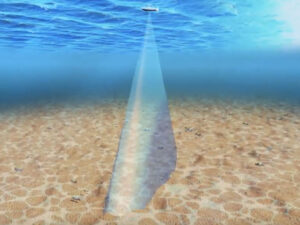Just as GPS satellites have revolutionized the way we navigate, similar satellite constellations can now give us unlimited communications range. Satcom options come in a variety of sizes, capabilities and costs. You can find handhelds, fixed-mounted e-mailonly units, or sets that can handle voice, fax, data, e-mail and Internet access. Here’s what you need, where to find it and what it costs.
You Need
E-mail: SkyMate has a small transceiver module with a whip antenna that connects to your computer to give you nearly worldwide e-mail capability. With it you can access marine weather, position reporting of your trip and a Web log feature. For security, an optional monitoring system notifies you when you’re not aboard should your boat lose AC dockside power or take on water. In addition to the fees noted in the chart, there’s a one-time activation fee of $99. Don’t e-mail excerpts from Tolstoy. Shut it down in dry dock and pay just $6.99 a month.
Handheld Satellite Phones: The Iridium 9555 handheld portable satellite phone lets you place a call from anywhere in the world. It comes with a cable ready to connect to your computer for e-mail as well. Its portability lets you take it ashore where cell coverage may be nonexistent. It can also be handy when traveling, hiking or hunting or for any other on-land applications, adding year-round practicality. Airtime costs in the table are charged only when you call out — those calling you are on their own dime. Globalstar with its GSP-1700 portable phone offers similar services with somewhat less coverage. The phone is not worldwide and, due to satellite instability, provides only partial coverage to North America and the Caribbean. Check Globalstar’s website for coverage times by area.
Internet Access: If your communications appetite hungers for the wide world of the Web, you don’t have to suffer Internet withdrawal pangs any longer. Inmarsat’s Mini M, like KVH’s TracPhone 252, provides to small boats voice, fax, data and e-mail capability with a maximum data speed of 9.6 Kbps. In reality, expect about half the speed of “dial up” access. This can be useful for infrequent Internet access, particularly if you turn off the graphics in your browser.
Broadband: Inmarsat FleetBroadband is capable of speeds up to what you might experience at home. Beginning a couple of years ago with $20,000-plus price tags and jumbosize dome antennas, FleetBroadband’s success has spawned a new generation of siblings that most closely fit the size and pocketbooks of the boating community. The 13½-inch FB150 and the 19-inch FB250 are voice/data/e-mail/ Internet satellite communications terminals that are targeted right at pleasure boating. VSAT, offered by many providers (including KVH but not Inmarsat) is the current big kid on the block. With dome sizes from 26 inches to more than 100 inches in diameter and prices beginning in the mid- $20,000 range, this Internet firepower is targeted more to the large-yacht crowd. However, the more impressive 2 Mbps plus download speeds are welcome for heavy airtime users. Iridium has produced a fixed-mounted OpenPort antenna terminal with an easy-to-accommodate dome antenna that delivers a comfortable data speed approaching 128 Kbps.
The future promises to deliver the world of high-speed Internet to boating with smaller-size antennas, faster broadband speeds, lower equipment prices and a marked reduction in airtime costs. So stay tuned. The race to place a satphone on your boat has just started.
[

](/sites/boatingmag.com/files/import/embedded/anchors/sites/all/files/images/201004/SatPhoneLarge.jpg)
_Click to enlarge.









